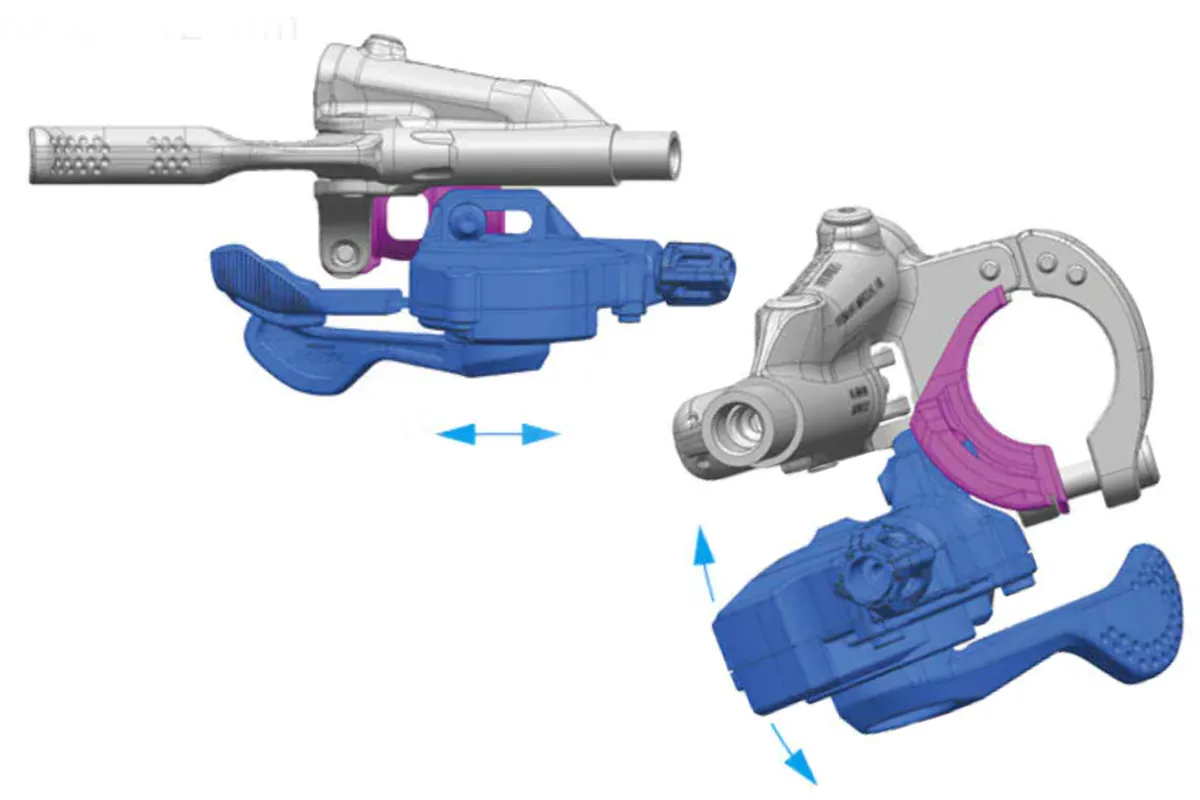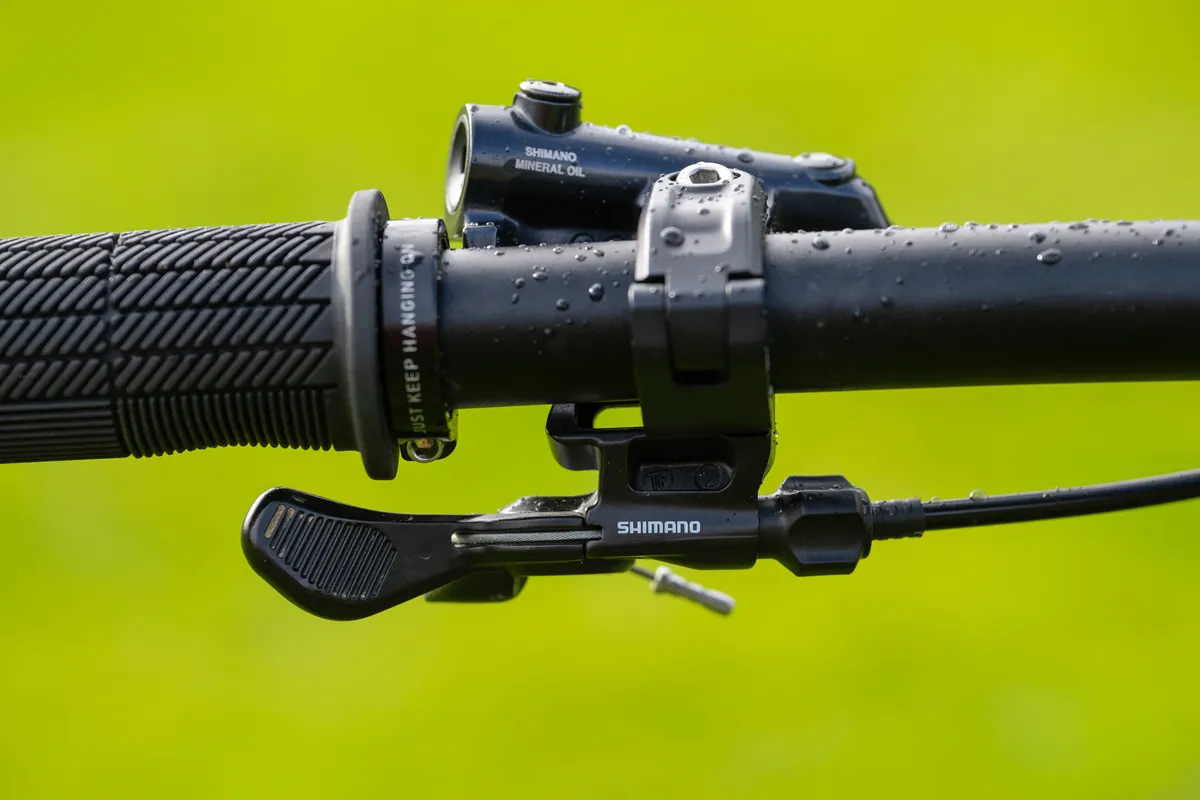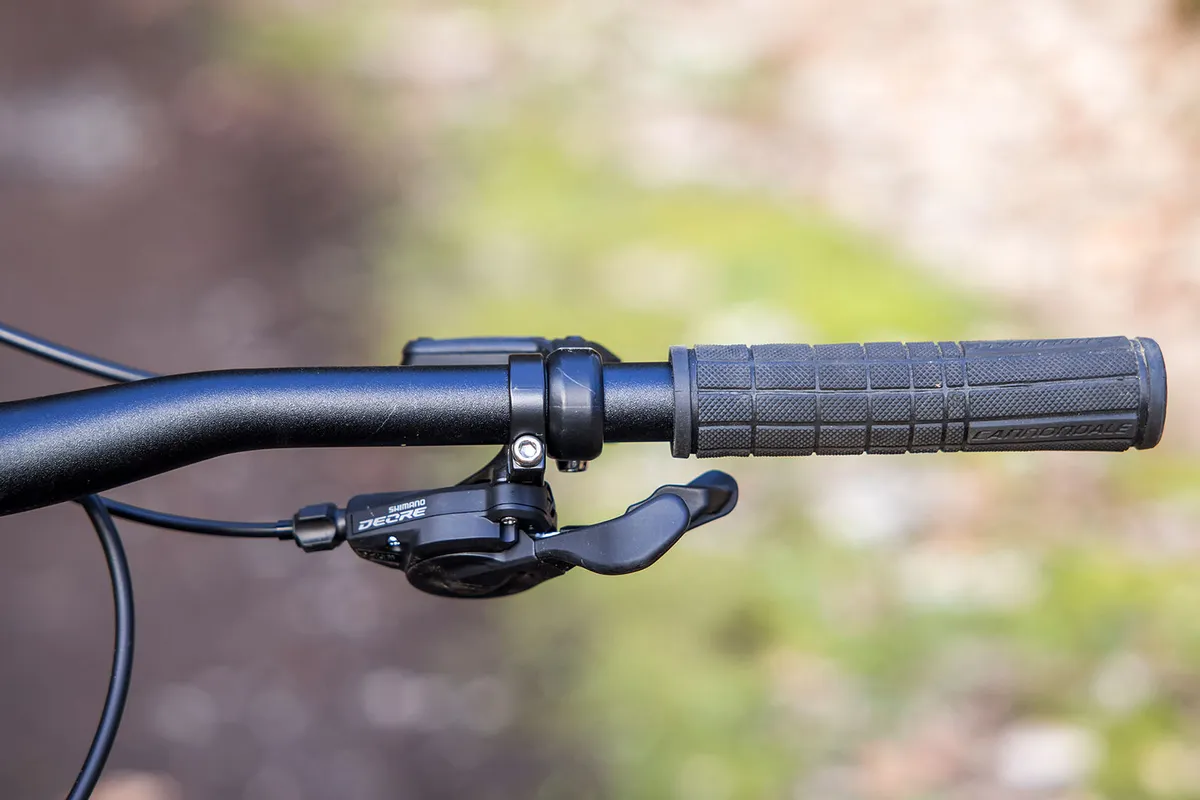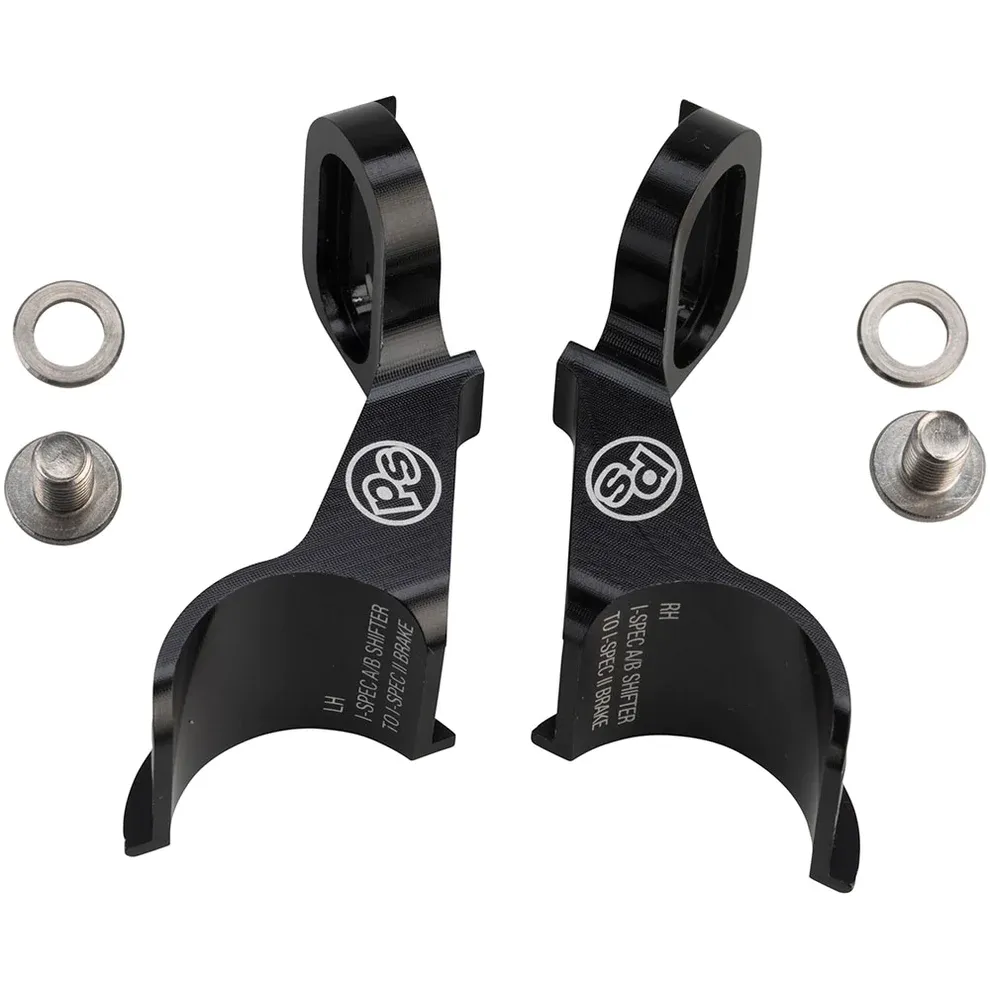Shimano's I-Spec is single-clamp bar adaptor that allows the shifter or dropper post lever to fix directly to the brake lever, resulting in a lighter and more minimalist cockpit.
At one point, your mountain bike brake and shift levers were two separate components and clamped separately onto your handlebars. It’s a setup you can still buy and the only option in lower-spec Shimano groupsets, but it’s a bit heavy, a bit messy and takes up handlebar real estate.
There’s also added adjustment built into the I-Spec system that enables you to alter the angle of the shifter lever relative to the brake lever, so you can set up the two to suit your preferred ergonomics.
Confusingly, I-Spec has now gone through four different versions, not all of which are compatible. First, there was I-Spec A, introduced in 2011 and now obsolete. That was followed by I-Spec B, which still lives on in some product ranges.
Not wanting to rest on its laurels, Shimano followed this up with I-Spec II, which added more adjustability and made for easier installation.
The latest and greatest iteration is I-Spec EV. Again, it ups the adjustment range, and also increases rigidity and available braking force.
As well as MTB components, you can find some versions of I-Spec as an option in Shimano’s other flat-bar groupsets, such as Cues and Alfine.
I-Spec A and I-Spec B

I-Spec A and the newer I-Spec B were Shimano’s first attempt at integrating the shift lever and brake lever on one handlebar clamp. A hole in the brake lever clamp assembly enables you to bolt the compatible shift lever to the back of the brake lever.
In type A, there was a simple nut and bolt, and the shifter mounted onto a small hook on the brake lever clamp. In type B, there’s a small lateral pin that passes through the two sides of the brake lever clamp and supports the bolt for the shifter. There’s also a bit available that enables you to mount a type B shifter on a type A brake lever.
Here’s a table of groupsets with an I-Spec B option:
| Series | Model |
|---|---|
| XTR | M980 |
| Deore XT | M8000/M780/T780 |
| SLX | M7000/M670 |
| Deore | M610/T610 |
| Saint | M820 |
| Deore LX | T670 |
| Alfine | S7000/S700 |
I-Spec II

Whereas I-Spec A and B used a bolt assembly on the brake lever to mount the shifter, I-Spec II uses a semi-circular spacer inside the brake lever clamp.
There’s a greater angle of rotation between the two assemblies (15 degrees) and you can also move the shift lever position in and out by 12mm relative to the brake lever, to optimise the ergonomics of your controls. I-Spec II isn’t compatible with I-Spec A or B.
Here’s a table of groupsets with an I-Spec II option:
| Series | Model | Rotation adjustment | In/out adjustment |
|---|---|---|---|
| XTR | M9000 | 15 degrees | 12mm |
| Deore XT | M8000/T8000 | 15 degrees | 12mm |
| SLX | M7000 | 15 degrees | 12mm |
| Deore | M6000/T6000 | 15 degrees | 12mm |
| Non-series | MT500 | 15 degrees | 12mm |
| Zee | M640-B | 15 degrees | 12mm |
| Metrea | U5000 | 15 degrees | 12mm |
| Alfine | S7000/S700 | 15 degrees | 12mm |
| Cues | U6000/U8000 | 15 degrees | 12mm |
I-Spec EV

Shimano’s latest version of I-Spec is designed to increase adjustment range even more and so improve ergonomics for a wider range of riding styles. It's known as I-Spec EV.

There’s the same ability to adjust the angle of the shifter lever relative to the brake lever. However, the angle adjustment range varies from 10 degrees for Deore M600 and M4100 up to 60 degrees for XTR M9100/M9120. In the middle are Deore XT M8100 and SLX M7100, with 20 degrees of adjustment.
All these levers enable you to move the shift lever in and out relative to the brake lever by 14mm, an increase of 2mm over I-Spec II.
As well as the extra adjustability, the positioning of the brake cylinder means its outer edge under the lever makes contact with the handlebar. Shimano says this gives a second bracing point, so there’s greater rigidity and more leverage for more effective braking.

There’s a mechanical seatpost dropper lever that’s compatible with I-Spec EV too. It weighs 37g and gives 7mm of cable pull that works with most dropper posts.
Shimano itself doesn’t specify whether I-Spec EV is compatible with older standards, but there are reports online of users mounting I-Spec II shifters on I-Spec EV brake levers. It needs shorter bolts than those supplied – repurposed brake rotor bolts seem to work.
| Series | Model | Rotation adjustment | In/out adjustment |
|---|---|---|---|
| XTR | M9100/M9120 | 60 degrees | 14mm |
| Deore XT | M8100 | 20 degrees | 14mm |
| SLX | M7100 | 20 degrees | 14mm |
| Deore | M6100/M4100 | 10 degrees | 14mm |
Mixing SRAM and Shimano

It’s worth keeping in mind that if you're buying Shimano aftermarket, you’re not being forced into an I-Spec setup. You can still run clamp-type shifters and brake levers together if you wish to mix SRAM and Shimano.
I-Spec adaptors

If you’re interested in maximising handlebar real estate, ProblemSolvers offers a range of I-Spec to MatchMaker adaptor options, and Wolf Tooth sells its equivalent, the Shiftmount.

